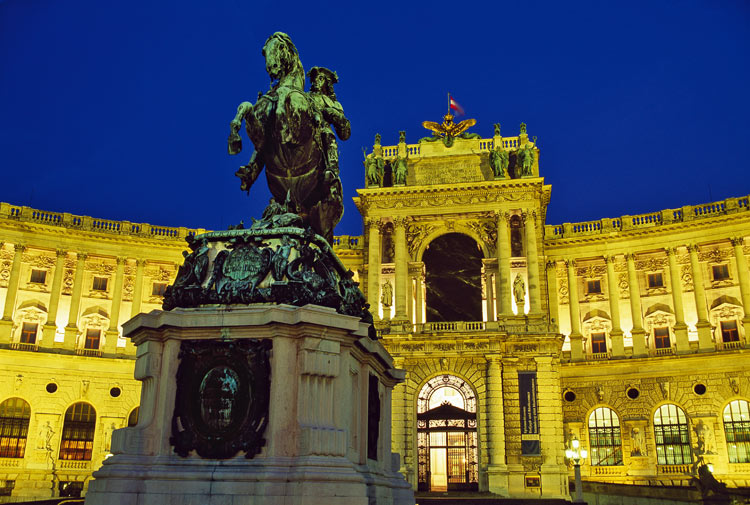The Fortaleza de Sagres in Portugal the prehistoric site and museum Kaprina in Croatia; the castle and the Archdiocesan Museum Olomouc, Czech Republic; the Imperial Hofburg Palace in Vienna; the historical collection of the University of Tartu in Estonia; the Conservatory of Music Franz Liszt; Mundaneum of Mons, Belgium; the European district of Strasbourg and the Cemetery East Front of the First World War in Poland, have been awarded the European Heritage Label. A handful of places that deserve to be admired.

1- Fortaleza de Sagres (Portugal)
The town of Sagres is a quiet and relaxing oasis in the middle of Algarve and has in its strength over his landmark monument. Integrated in the Natural Park of Southwest Alentejo and Costa Vicentina, the castle crowns a sacred promontory whose steep cliffs enjoying a stunning view of the Atlantic coast. Walls, gates, embankments and buildings such as the Church of Our Lady of Grace, are discovered on a tour of the various areas, open to the public.
2- Prehistoric Deposit and Museum Of Kaprina (Croatia)
In the mountains, Hunjakovo, near the city of Kaprina, in the north, is one of the largest and most important deposits of Paleolithic Neanderthal world. Next to the site has built a museum with a display of the evolution of man from prehistoric times to the present day.
3- Castle and Museum Archdiocesan Olomouc (Czech Republic)
The former capital of Moravia is a World Heritage Site; something is the country’s largest monument reservation with permission from Prague. Only in the center, there are 12 churches and St. Wenceslas has been the most important cathedral in the region over the past 900 years. Situated atop a hill, this is the most important part of the castle, now specifically recognized by UNESCO as a monument. Here he was killed Wenceslas III, the last king of the Czech Premysl dynasty, and this is also the Museum of the Archdiocese of Olomouc.
You may also like to read another article on xWorld: 6 tips for a long flight without suffering
4- Hofburg Imperial Palace (Vienna, Austria)
Palace Vienna former residence of most of the Austrian royalty is immense and although he devote a couple of days would not be enough for all its museums and secrets. Mythomaniacs will not leave disappointed by a visit to the Treasury where crowns and symbols of power of the Empire or the museum devoted to Empress Sisi are saved, which you can read his melancholy poems and watch some of his personal items, jewelry, clothing and even the dagger with which he was assassinated in Geneva in 1898. Art lovers will always find an excuse to return to the Albertina, famous for its temporary exhibitions.
5- Historical site of the University of Tartu (Estonia)
The oldest university and the largest in Estonia and one of the most prestigious in the world, was founded in 1632 and its main building dates from 1809. Its observatory became one major astronomical research centers in Europe.
6- Conservatory Of Music Franz Liszt (Budapest)
The pianist himself and composer Franz Liszt founded concert hall and music college of Budapest in 1875. It was founded at the home of Liszt, and transferred to the three-story building style neorrenacentista built on Andrssy Avenue today.
7- Mundaneum (Mons, Belgium)
The documentation center universal and that during the first half of the twentieth century was the cradle of international institutions humanists, is considered the first search engine of history, something has come called the “Google of paper.” It is located in the Belgian city of Mons, which in 2015 was World Capital of Culture, offering exhibitions and conferences related to their heritage.
You may also like to read another article on xWorld: The Philippines, a volcanic country
8- European Neighborhood Strasbourg (France)
To the north of Strasbourg, where the waters of Ill meet with the canal from the Marne to the Rhine, this neighborhood of modern architecture hosting the European institutions in the city that shares is located along with New York and Geneva, the privilege of hosting sites without state capital. The Palais de Europe, a huge square of pink sandstone, glass and arranged around a large steel chamber and gardens, and the Palace of Human Rights, the architect was Richard Rogers, are its most outstanding buildings.
9- Cemetery East Front WWI (Poland)
This is a place to remember, as the war cemetery No. 123, built in 1918 on the hill Pustki, is the scene of one of the largest battles of the World War I between German and Austro-Hungarian armies and the Russian army: the battle of Gorlice, also known as the “Eastern Verdun”. Visithttp://thefirewheel.com/for more like this article.


